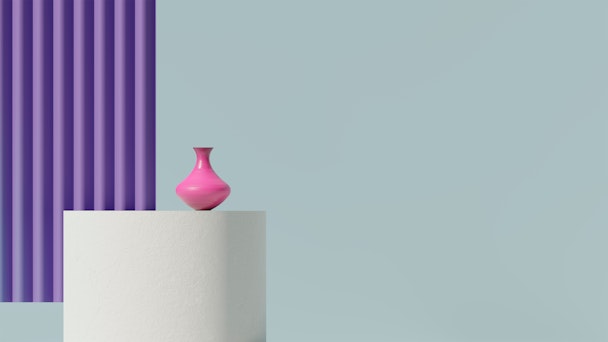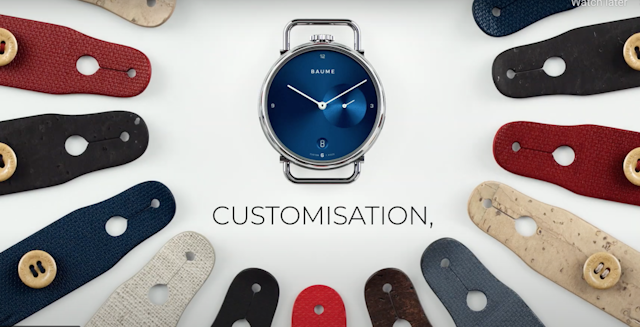Four innovative ideas for elevating the luxury digital experience
Appreciating a luxury product traditionally means touching it, feeling it, experiencing it in person and meeting the creators. However, Covid-19 has made this a real challenge for brands, leaving luxury businesses with the need to come up with a new marketing strategy; one that still allows for the ease, comfort, and personalization befitting the HNW and UHNW audience, while forgoing any requirement for in-person contact.

Relevance looks at the digital opportunities in luxury that have emerged after the pandemic. Image: Nataliya Smirnova/Unsplash
Crafting an on-brand luxury digital experience
According to Bain & Company, in 2020 the core personal luxury goods market was depleted for the first time since 2009, falling by 23% from 2019. This has been followed by a change in buying behavior due to the decrease in tourism worldwide, with regional sales decreasing massively but online shopping for luxury goods rising, doubling its share of the market to 23% in 2020 from 12% in 2019.
This landscape is forcing luxury firms to rethink their current marketing strategies, using innovation as a tool to get closer to their customers. In this article we explore four initiatives to help create an incredible luxury digital experience.
1. Get to know who your luxury customers are
In luxury, particularly, customization is one of the main advantages that exclusive companies can offer over mainstream brands. In retail, some local luxury businesses such as hotels or restaurants have the ability to really know their customers individually, allowing them to offer a highly personalized experience. The question is, how can we do that online?
Digital marketing allows companies to track consumer behavior in great detail, collecting not only the person’s general data such as age, gender and nationality but also what their online habits and preferences are. This sort of information, if used cleverly, can allow luxury brands to sort the exact products or experiences that their customers are likely to purchase or engage with.
One example of a company doing this well and even taking it one step further is Farfetch with its Store of the Future. With this innovative initiative, Farfetch wanted to merge online shopping with the offline retail experience, tracking the customer’s behavior at all touch points, enabling what it called the ’offline cookie’.
However, managing the trade-off between having relevant data and keeping your customer’s privacy is even more important for a luxury brand’s digital experience than for a mass-market one. Affluent consumers are less likely to openly share their data, so collecting and storing that sort of information can be harder.
2. Offer them uniqueness and exclusivity, online
Another challenge is how to make your customers feel more special, more attached and emotionally connected to your brand even if they are not having the in-store experience. Traditionally, offering something bespoke to a client’s needs has been a long-used strategy by luxury brands, but how can companies now convey that emotion online?
One strategy is to allow customers the ability to customize their product online, whether it is an exclusive watch, a limited edition handbag, a supercar or a luxury vacation. The ability to select all the items that make the final product unique to the client will allow for your customers to feel engaged, connected and more loyal to your brand.
A great example in luxury retail is Baume, from Baume and Mercier, which has launched a new watch line that is fully customizable online and that allows for its customers to feel they are getting a one-of-a-kind product, keeping its signature’s craftsmanship through a seamless luxury digital experience.

3. Establishing a personal touchpoint
Nowadays, a physical store has between a 20% and 30% conversion rate, but little footfall. E-commerce has on average 1% conversion rate but a huge amount of traffic (equivalent to footfall). In an ideal world, brands would be looking at having that in-store conversion, through online channels. But how can luxury brands deliver that personal experience if they are not in-store?
This is a great example of how some luxury brands are taking today’s challenges as an opportunity to further develop innovation within their companies. High-end French department store Galeries Lafayette has been one of the pioneers in understanding the needs of their clients and looking for a platform that allows them to deliver in-store experiences through digital. Galeries Lafayette is the leading department store in France, and renowned worldwide as the undisputed expert in fashion for the past 120 years. The Parisian retail store had to close its doors on March 15, due to the restrictions in France amid rising Coronavirus cases and had no set date to reopen as usual. This predicament sped up the digital transformation strategy that Galeries Lafayette had long strived to achieve. Its objective was to deliver its unique, luxury store experience to customers around the globe.
To do so, Galeries Lafayette partnered with Go Instore to develop an exclusive, personal online shopping service through live video. This allowed the luxury brand’s digital experience to mimic that which is usually found in-store. The advantages for the client were that he or she was not only able to see a different range of products at the same time, but to be talked through the history of the brand and to further engage with the brand representative, resulting in an emotional connection. In summary, it identified the importance of keeping both the convenience of buying online with the delivery of customer satisfaction and interaction that is traditionally found in-store.

4. Understand what the luxury local audience wants
Probably the best example to illustrate this last point is how well-known luxury hotel brands have decided to promote the concept of ’staycation’ as a way to attract the local affluent consumers that are not allowed to travel due to Covid-19 restrictions and are looking for new ways to treat themselves.
In an interview with the top management with GHM and Intercontinental Hotels, Gabriel Matar, chief executive of Sentinel, explained the shift that luxury hospitality had to do in order to quickly adapt to the current situation and avoid a full closure. Willemijn Geels, vice-president of development for Europe at Intercontinental Hotels Group. stated that “the whole way of how you market your property has completely changed”. She said that IHG has had to rethink the way it sells, and that it now starts by targeting local and regional travelers, mostly for leisure.
Once things get to normal, however, international travel may again become a focus. In the meantime, understanding what your local affluent consumers may need, be that a culinary experience, a luxury spa or simply a countryside retreat, could be a provisional answer to this situation.
To summarize, 2021 may present a number of challenges for exclusive brands, but there are a number of digital initiatives that can help to innovate and revolutionize the way luxury is currently consumed. If you need help implementing a luxury digital experience for your business, get in touch with our team.
Rumble Romagnoli, president at Relevance.
Content by The Drum Network member:

Relevance
Relevance is a strategic and creative digital marketing agency specialising in profiling and targeting Ultra-High-Net-Worth-Individuals for the world's most exclusive...
Find out more
